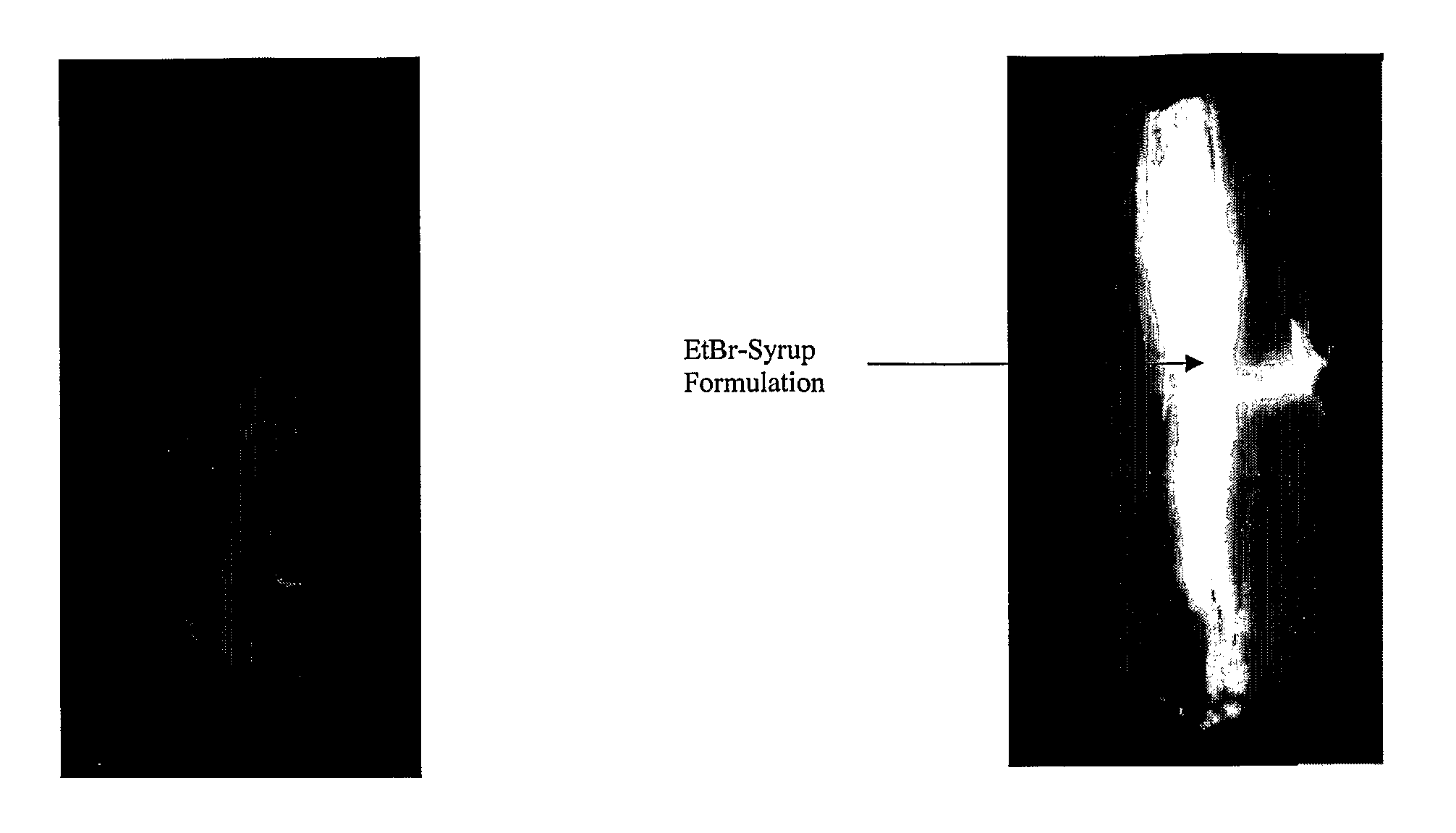Adherent antimicrobial barrier and sanitizing agent
a technology of antimicrobial barrier and sanitizing agent, which is applied in the field of viscous, food-safe antimicrobial compositions, can solve the problems of inability to ensure complete decimation of microorganisms, inability to adhere to solution for a long time, and inability to completely eliminate microorganisms. , to achieve the effect of eliminating direct or indirect transfer of contaminants, prolonging the solution, and residual disinfection properties
- Summary
- Abstract
- Description
- Claims
- Application Information
AI Technical Summary
Benefits of technology
Problems solved by technology
Method used
Image
Examples
example 1
[0034]This Example (TABLE 3) demonstrates the viscous nature of two solutions prepared with different concentrations of pectin (15 and 25%). The fluidity of viscous solutions formulated with 15 and 25% pectin and heated to 80° C. or left unheated (22° C.) was tested. Specifically, the heated or unheated solutions were drawn up into a 25 ml pipette and left to drain free of the solution. The time (in seconds) was measured to determine residence time of the various fluids in the pipette.
[0035]
TABLE 3Adherent properties of formulated liquid solutions containing variousconcentrations of pectin as the primary gelling / thickening agent%TemperatureVolumeTime toPectin(° C.)(ml)pHDrain (s)0 (Water control)22257.22.41522252.314.51580252.43.92522252.1190.52580252.119.9
[0036]As shown by the data, the relative retention times were enhanced by relatively low pH and relatively low temperature.
example 2
[0037]This Example (TABLE 4) demonstrates the antimicrobial properties conferred by an exemplary liquid formulation composed of 5% lactic acid, 2.5% pectin, and 92.5% water. The disinfecting quality of the solution was tested on an aqueous culture of Escherichia coli biotype I. For the test the following ratios of a 105 CFU / ml culture were prepared with the antimicrobial formulation: 9:1; 2:1; and, 1:1. The mixtures were left for 30 seconds after which time, serial dilutions were made and plated onto Escherichia coli / Coliform Petrifilms (3M; St. Paul, Minn.). Plates were incubated at 35° C. for 24 hours and counted to enumerate survivors.
[0038]Results. TABLE 4 indicates that at a ratio of 9:1 (Culture:Antimicrobial Barrier formulation), populations were not substantially reduced, while at a ratio of 2:1, populations were reduced by >4 log CFU / ml.
[0039]Although, the present Example does not provide a sanitizer as defined by the Environmental Protection Agency (i.e., 5 log reduction o...
example 3
[0041]The Example (TABLE 5) demonstrates, according to preferred aspects of the present invention, the efficacy of the inventive barrier formulations in reducing or precluding bacterial contamination transferred by the surface of a stainless steel knife, which represents an implement typically used in a food processing operation. Specifically, the adherent antimicrobial barrier property of the inventive formulations was tested to determine the efficacy of said solutions to exclude bacterial contamination from food surfaces that may become contaminated during the use of implements (such as knives) in food processing. This Example models the operation of a knife in a ‘dehiding’ process of cattle in a beef operation.
[0042]In such operations, there is a high probability that the exterior of beef cattle will be covered with microbiologically-contaminated fecal material, presenting a risk of internalizing the contamination—to otherwise sterile underlying tissue during process cuts. The in...
PUM
| Property | Measurement | Unit |
|---|---|---|
| temperature | aaaaa | aaaaa |
| pH | aaaaa | aaaaa |
| temperature | aaaaa | aaaaa |
Abstract
Description
Claims
Application Information
 Login to View More
Login to View More - R&D
- Intellectual Property
- Life Sciences
- Materials
- Tech Scout
- Unparalleled Data Quality
- Higher Quality Content
- 60% Fewer Hallucinations
Browse by: Latest US Patents, China's latest patents, Technical Efficacy Thesaurus, Application Domain, Technology Topic, Popular Technical Reports.
© 2025 PatSnap. All rights reserved.Legal|Privacy policy|Modern Slavery Act Transparency Statement|Sitemap|About US| Contact US: help@patsnap.com


